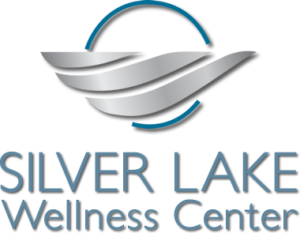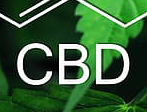Medical cannabis is still very new to many people. Ohio legalized medical cannabis in 2016, serving as the catalyst for many positive changes to help thousands of patients in need across the state.
With any new treatment, of course, comes many questions. Is it safe? How does it work? How can I personally benefit from this?
It also comes with many myths, rumors, and urban legends. Many of these myths portray cannabis as a drug that is ineffective, illegitimate, or easily prone to misuse.
In reality, cannabis has been used for its medicinal properties as far back in recorded history as we know. In ancient times, marijuana was used to help reduce pain, inflammation, and even to treat injured animals that humans depended on to travel and survive.
Now, cannabis is considered an entirely valid and increasingly accepted medical treatment that has proven to treat an extensive list of symptoms and conditions.
Let’s take a closer look at some of the biggest and most prominent myths about medical cannabis – and why they’re simply not true.
Read on to discover how we dispel the top 7 myths about medical cannabis!
7 Myths About Medical Marijuana: Debunked
- Myth: Marijuana doesn’t have any medicinal propertiesTruth: The Cannabis sativa L. plant is an herbaceous species that contains over 114 different types of cannabinoids. Cannabinoids are natural phytochemicals that have proven medicinal effects in humans.1In fact, cannabis is known to be helpful in treating chronic pain, nausea, and even rare forms of epilepsy.Cannabinoid neurotransmitters bind to the body’s natural cannabinoid receptors, working with the body’s naturally occurring Endocannabinoid System to help regulate a variety of functions such as sleep, mood, temperature and more to maintain homeostasis.2
- Myth: Medical marijuana is full of chemicals and additives.Truth: The term “medical marijuana” itself refers to use of the whole, unprocessed marijuana plant and its extracts that are used to treat a wide variety of symptoms.3In its purest form, cannabis is a species derived from the hemp plant. It contains a variety of cannabinoids and phytochemicals that have the potential to treat many different illnesses and clinical conditions.Medical cannabis is devoid of chemicals and additives often associated with opioids and synthetic drugs, making it a much safer alternative for many patients. According to research from Harvard Medical School, medical cannabis use can even help opioid dependence.4
- Myth: Anyone can get medical cannabis from a regular dispensary.Truth:Purchasing and using medical cannabis requires a medical identification known as a medical marijauana card, commonly referred to as a “med card” or MMD. A med card allows a patient to legally purchase medical cannabis to treat their condition. It is issued by the state and requires a signed recommendation from a licensed physician in order to qualify, and the patient must meet the requirements designated by the state in which they reside.5Medical cannabis can only be purchased from a medically licensed store or dispensary. Some dispensaries in states with both recreational and medical legalized use are considered dual-licensed stores and are therefore permitted to sell both adult-use and medical cannabis. However, only those with an official medical marijuana card are permitted to purchase cannabis for medical use.6
- Myth: MMJ does not contain any tetrahydrocannabinol (THC).Truth: Many people believe that a major difference between medical and recreational cannabis is that MMJ does not contain THC, or tetrahydrocannabinol. However, this is not the case. THC is the primary active cannabinoid in the Cannabis sativa L. plant and is responsible for many of the therapeutic effects felt when consuming cannabis.7Medical cannabis is no exception. However, THC content varies from strain to strain. Many medical cannabis strains even have higher THC potency limits due to its proven benefits for a variety of symptoms.
- Myth: I have to smoke MMJ in order to feel any relief.Truth: Bongs and bud are far from your only options! As cannabis legalization progresses, new products are always being created and brought to market. For those who prefer not to smoke their medical cannabis but still prefer the inhalation method, cannabis vaporizersare a great choice.Another popular way to consume MMJ is cannabis edibles. These are products, often sweet, that have been infused with cannabis oil in order to deliver all of the benefits of cannabis through oral consumption. Edibles are an effective – and often delicious – way to reap the benefits of cannabis in an easy-to-use, moderately dosed form. For topical relief, many MMJ patients choose tinctures, sprays, or even transdermal patches that deliver the effects of cannabis directly to the skin.
- Myth: MMJ has such high levels of CBD that it can produce intoxicating effects or cause a ‘high.’Truth: Firstly, cannabidiol (CBD) is a non-psychoactive cannabinoid derived from the hemp plant. That means that it does not produce any ‘high’ effects and, in actuality, helps promote a sense of calm and well-bring. We can consider it the calmer, more relaxed ‘cousin’ of its psychoactive cannabinoid counterpart, THC.8Next, medical cannabis strains do not always include a high level of CBD. Differences in CBD:THC ratios can affect the way that the strain interacts with your body. Common ratios of CBD:THC are 1:1 or 2:1. CBD can help minimize the potentially intoxicating effects of THC, helping to deliver the therapeutic effects of cannabis to your body without any ‘high’ feeling.
- Myth: You will always feel the same effects if you use the same strain.Truth: Walk into any medical dispensary and you’re likely to see some familiar labels. Blue Dream, Sour Diesel, Orange Tangie – These are all common cannabis strains that are popular with all types of MMJ patients. Each strain is associated with a chemical profile that includes certain terpenes, cannabinoids, and other elements.However, it’s basically impossible for that consistency in biological makeup to translate to physical effects. While you are likely to achieve similar effects by using the same strain, it is unlikely that strains of the same name from different growers, different batches, and different parts of the country will produce identical effects.9
Medical cannabis is known for its amazing medicinal and therapeutic properties that have brought relief to millions of patients across the globe. Consult with your physician for any medical questions, especially as it pertains to your specific condition.
Wondering if you qualify for medical marijuana treatment in Ohio? Make an appointment with the Medical Marijuana Physicians of Ohio today!
Sources
- Cannabis sativa: The Plant of the Thousand and One Molecules, US National Library of Medicine, National Institutes of Health
- The Endocannabinoid System, Project CBD
- What is medical marijuana?, National Institute on Drug Abuse (NIDA)
- Access to medical marijuana reduces opioid prescriptions, Harvard Health
- What is a medical marijuana card?, Leafly
- Guide to using medical cannabis, Safe Access Now
- What’s the difference between recreational and medical cannabis?, Leafly
- CBD:THC Ratios, Marijuana Doctors
- How reliable are cannabis strain names?, Leafly





Leave a Reply